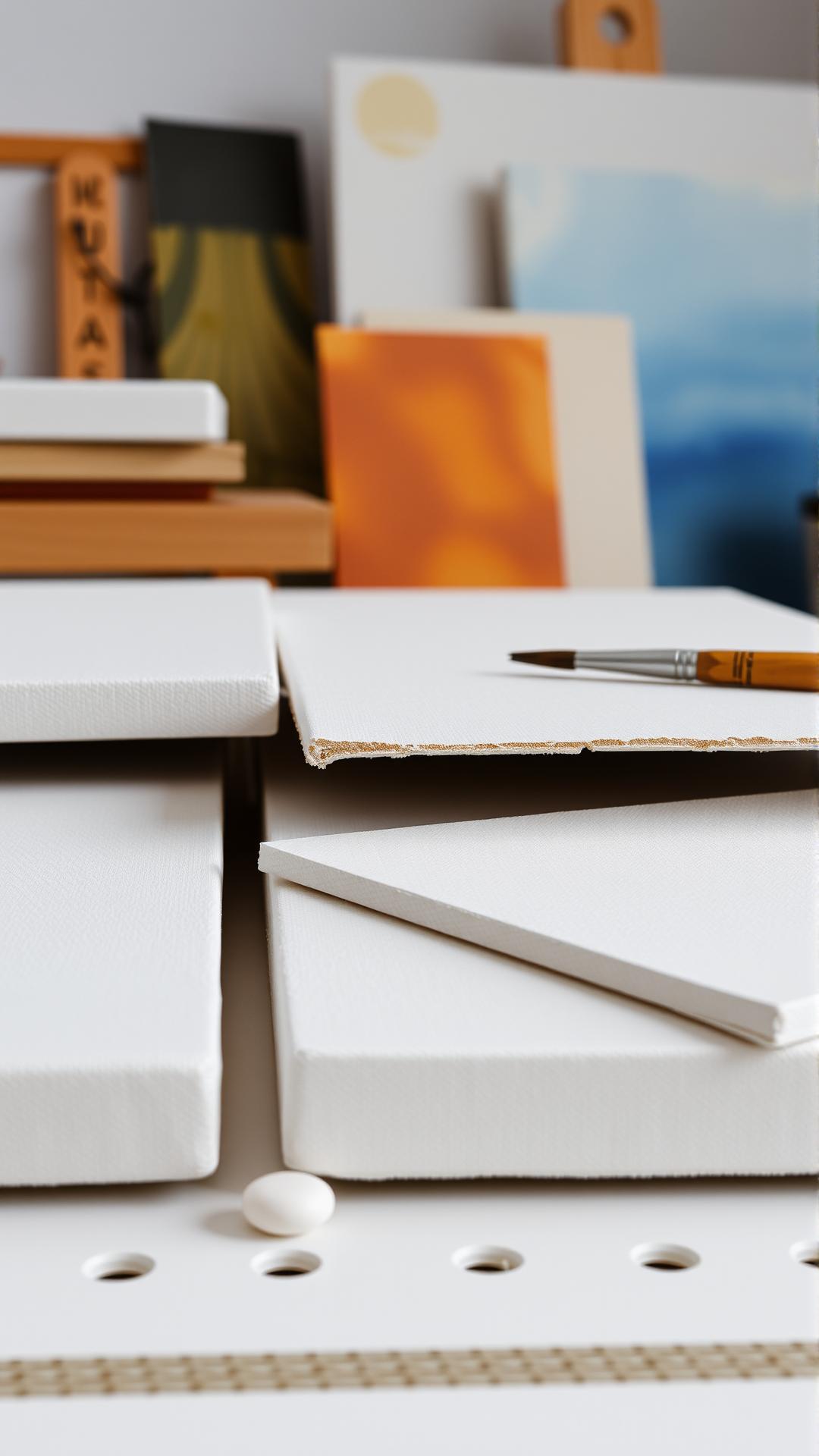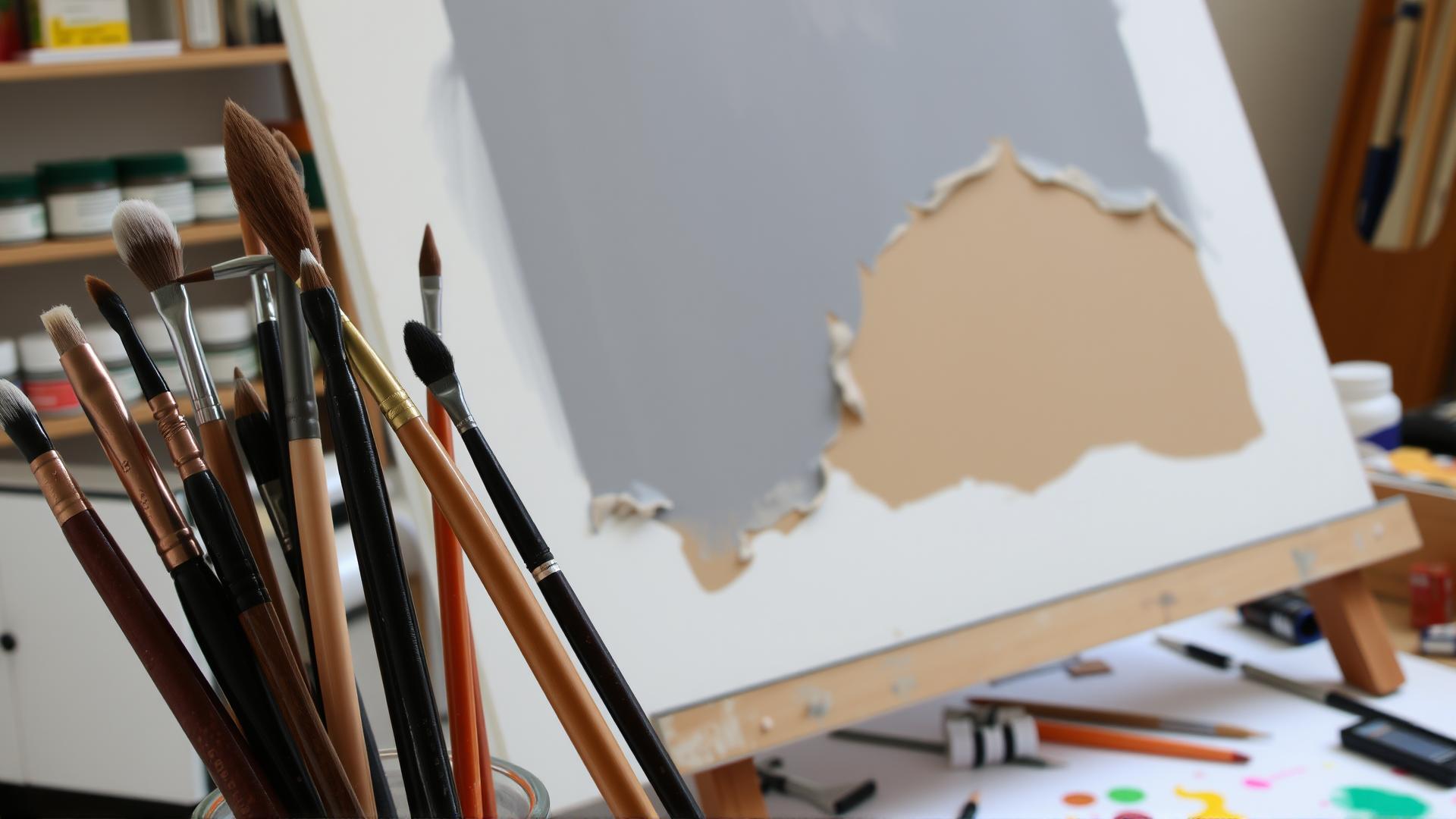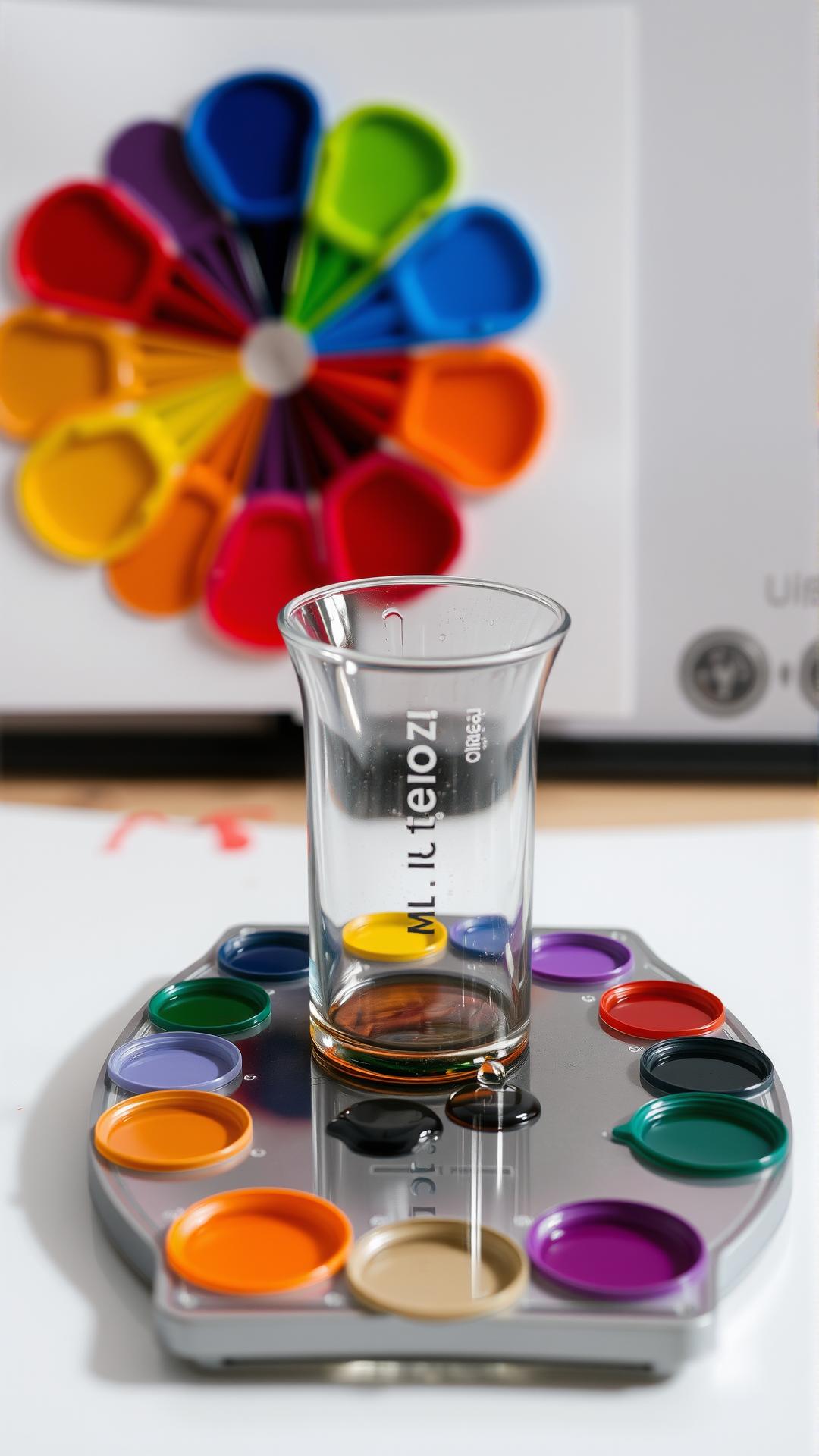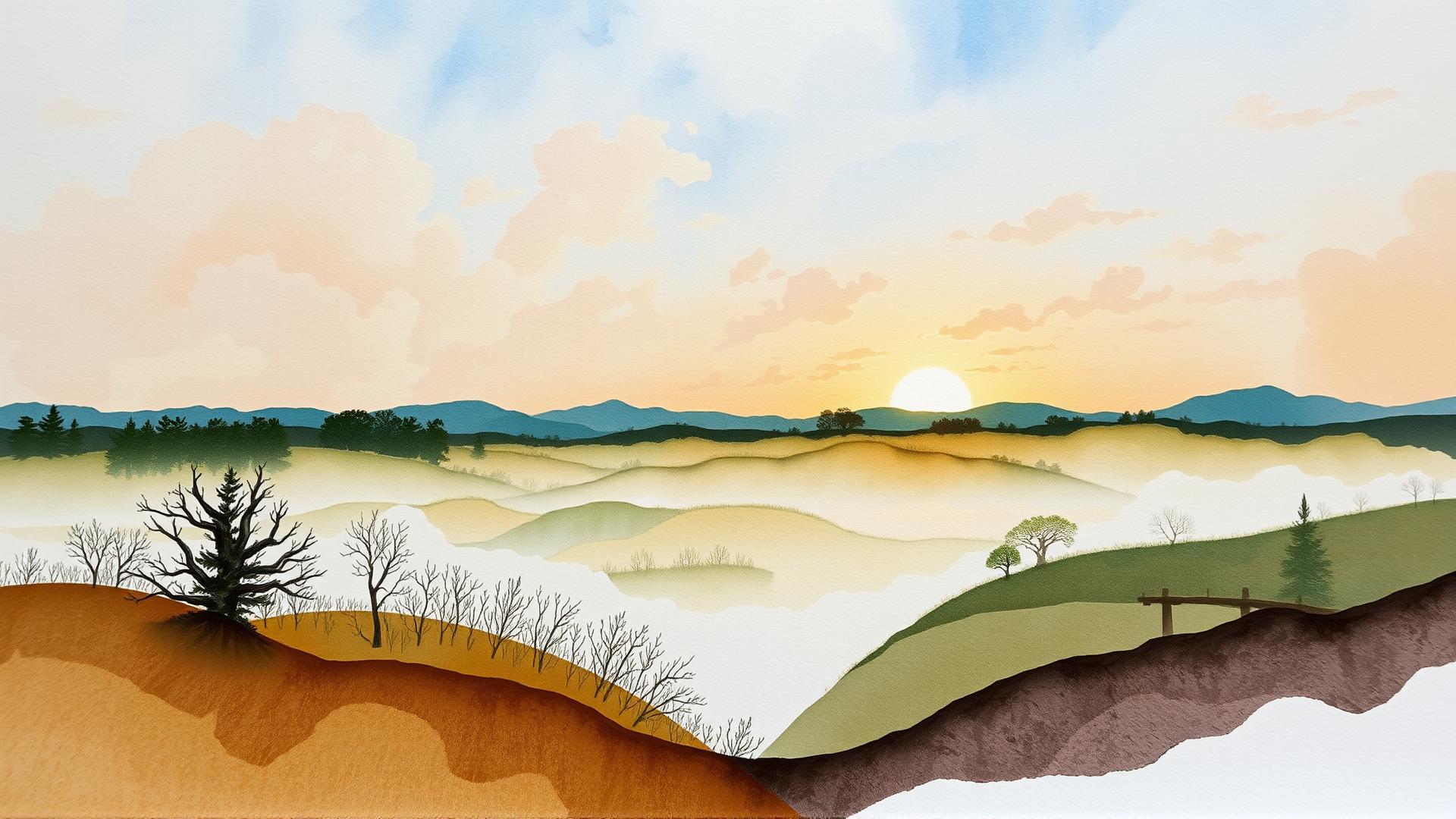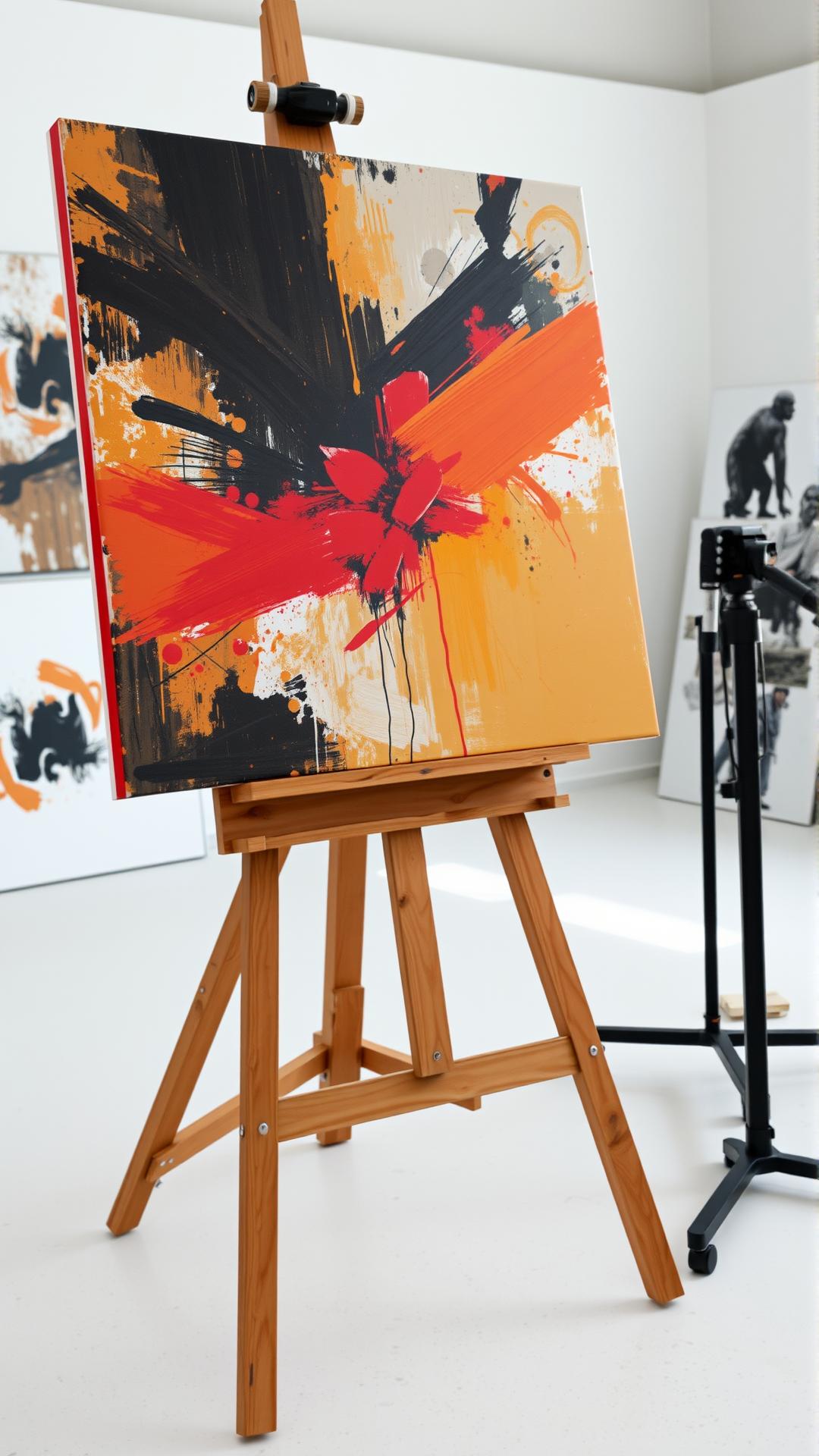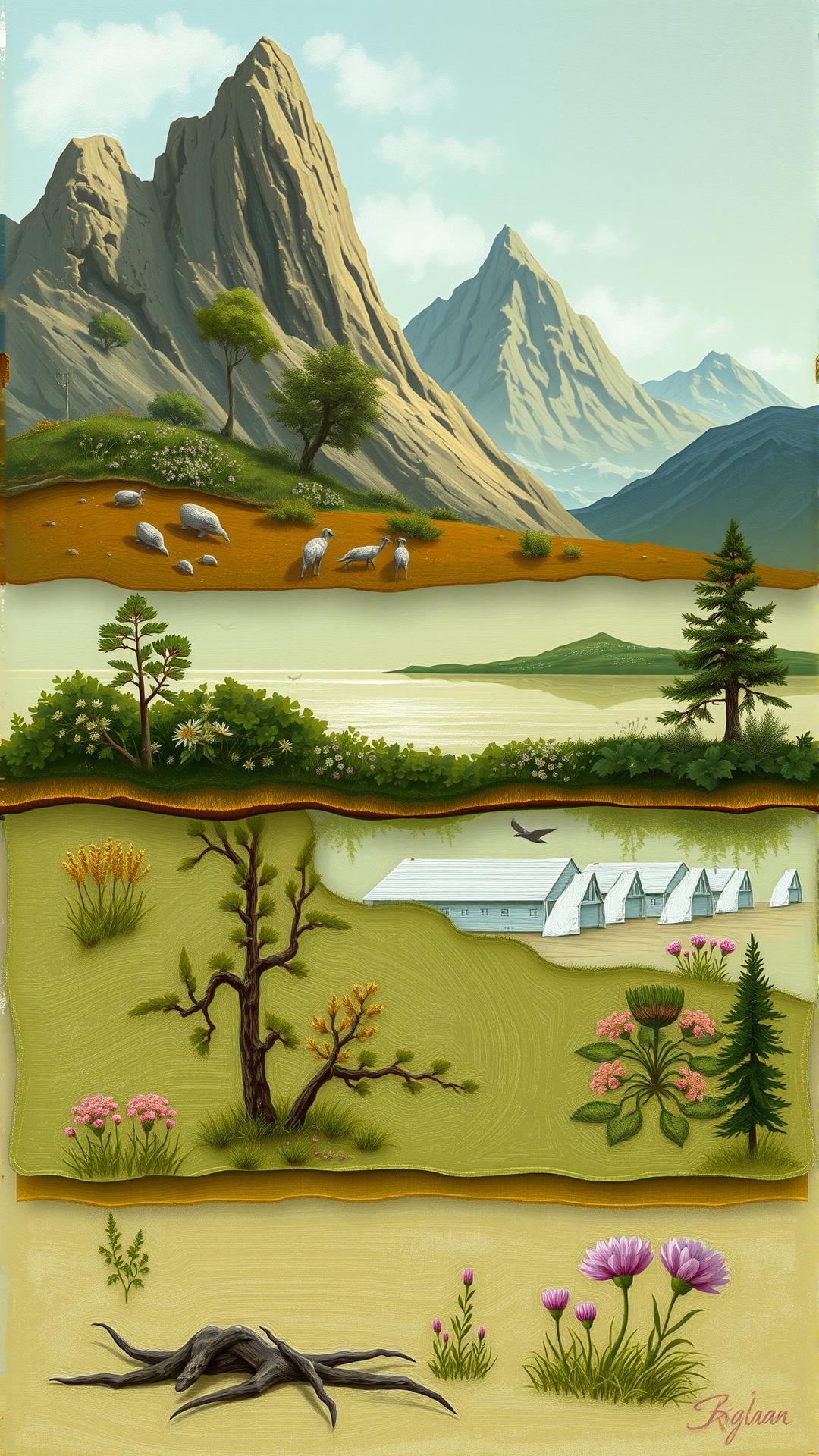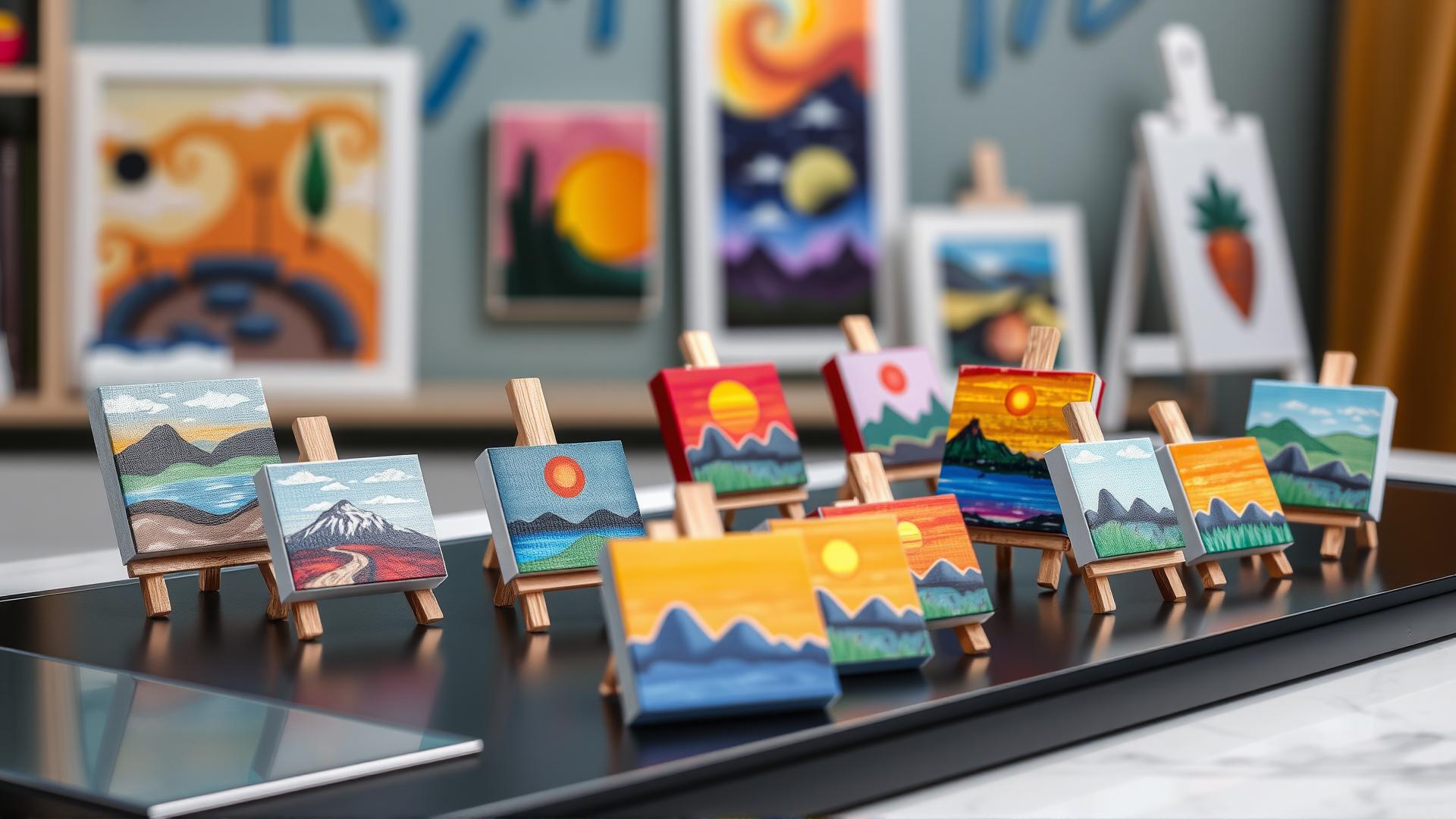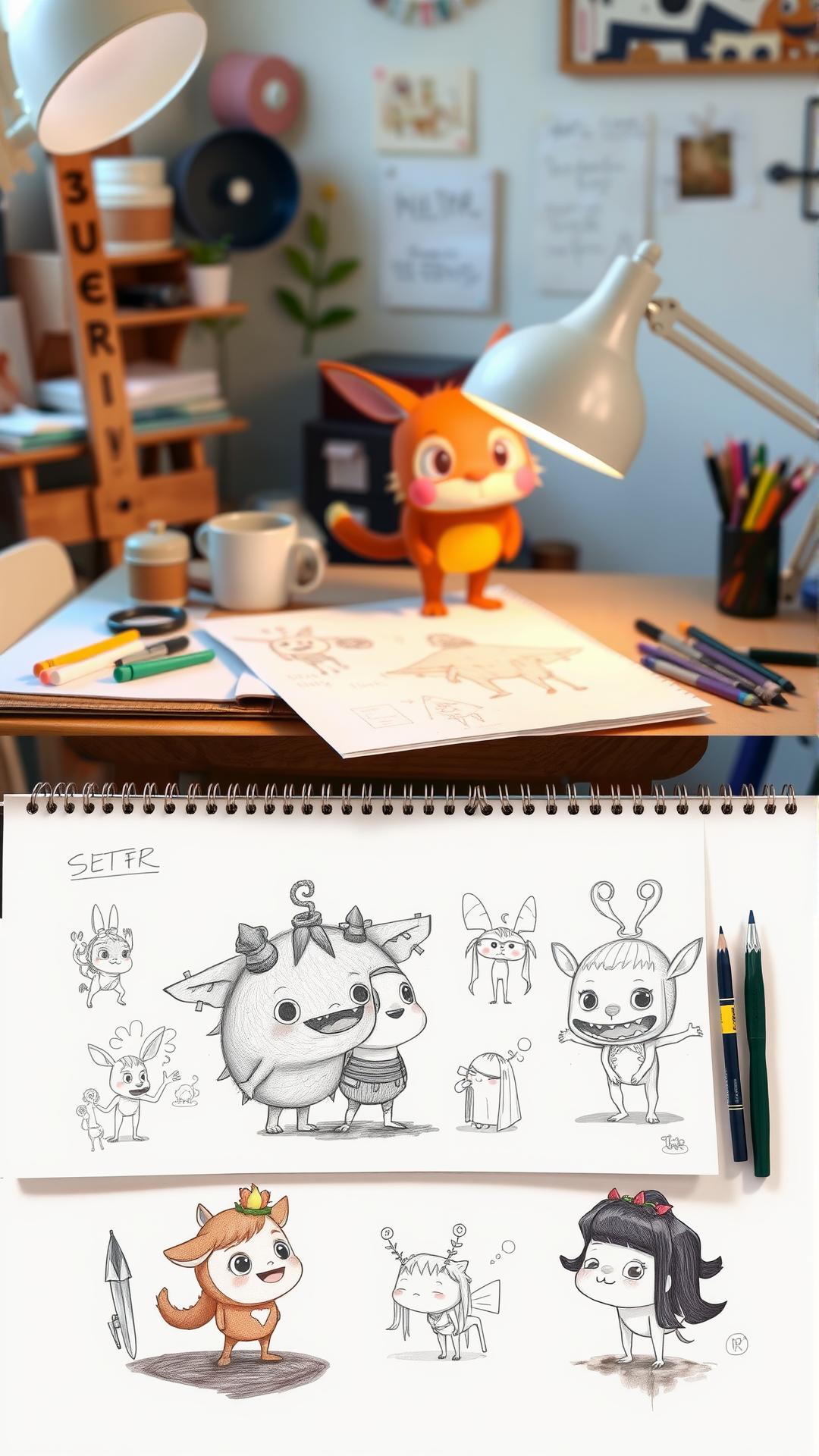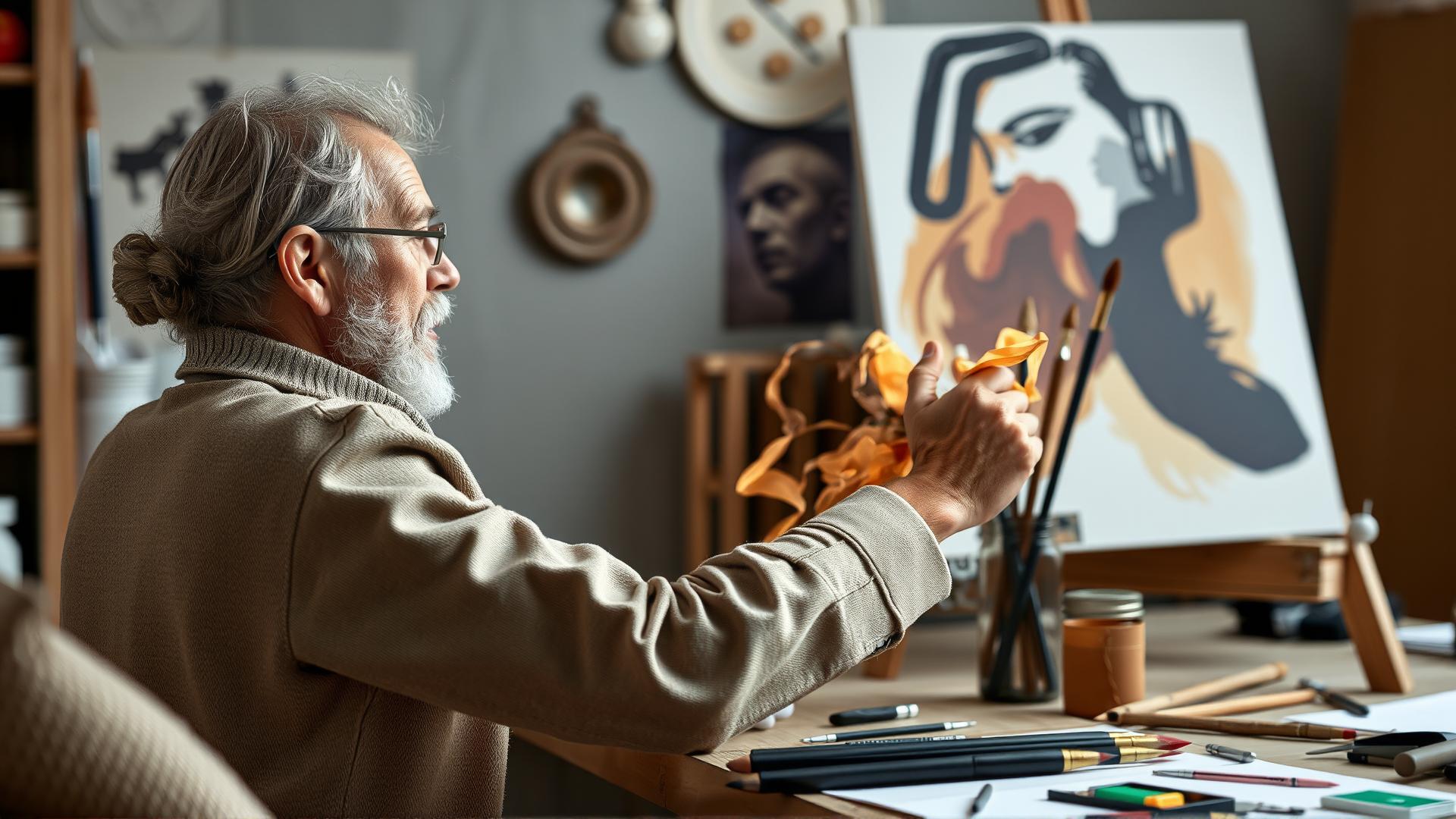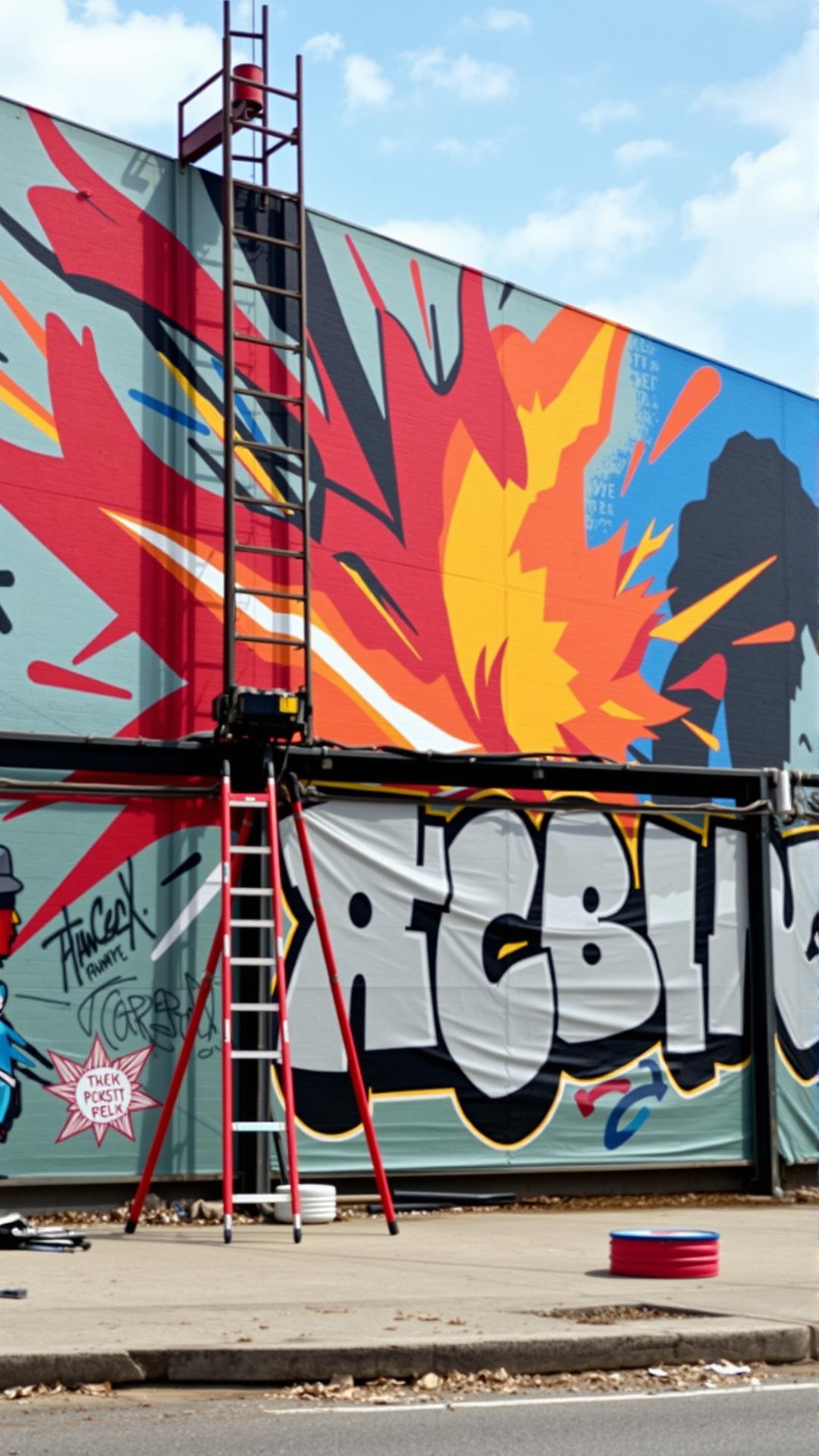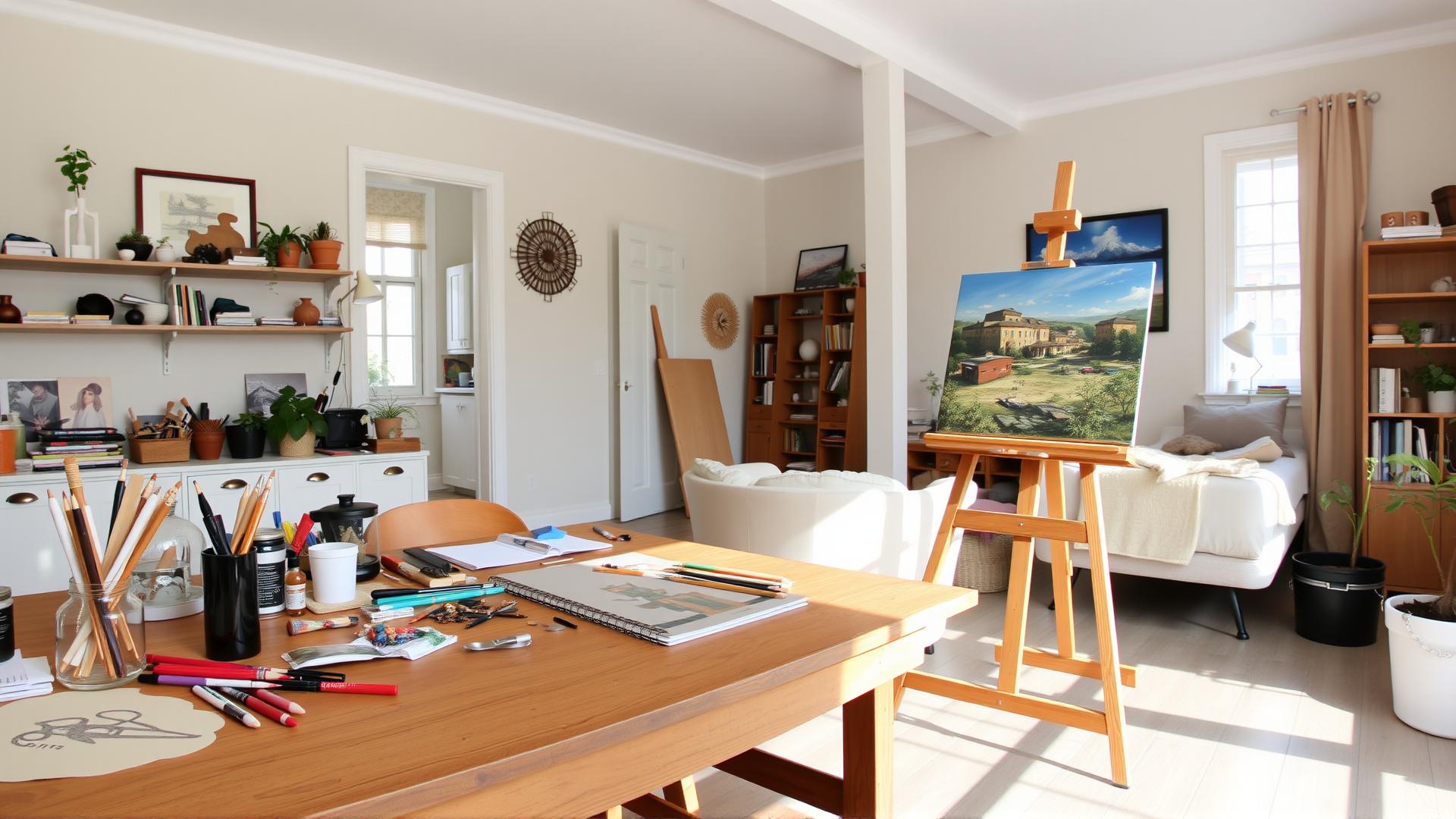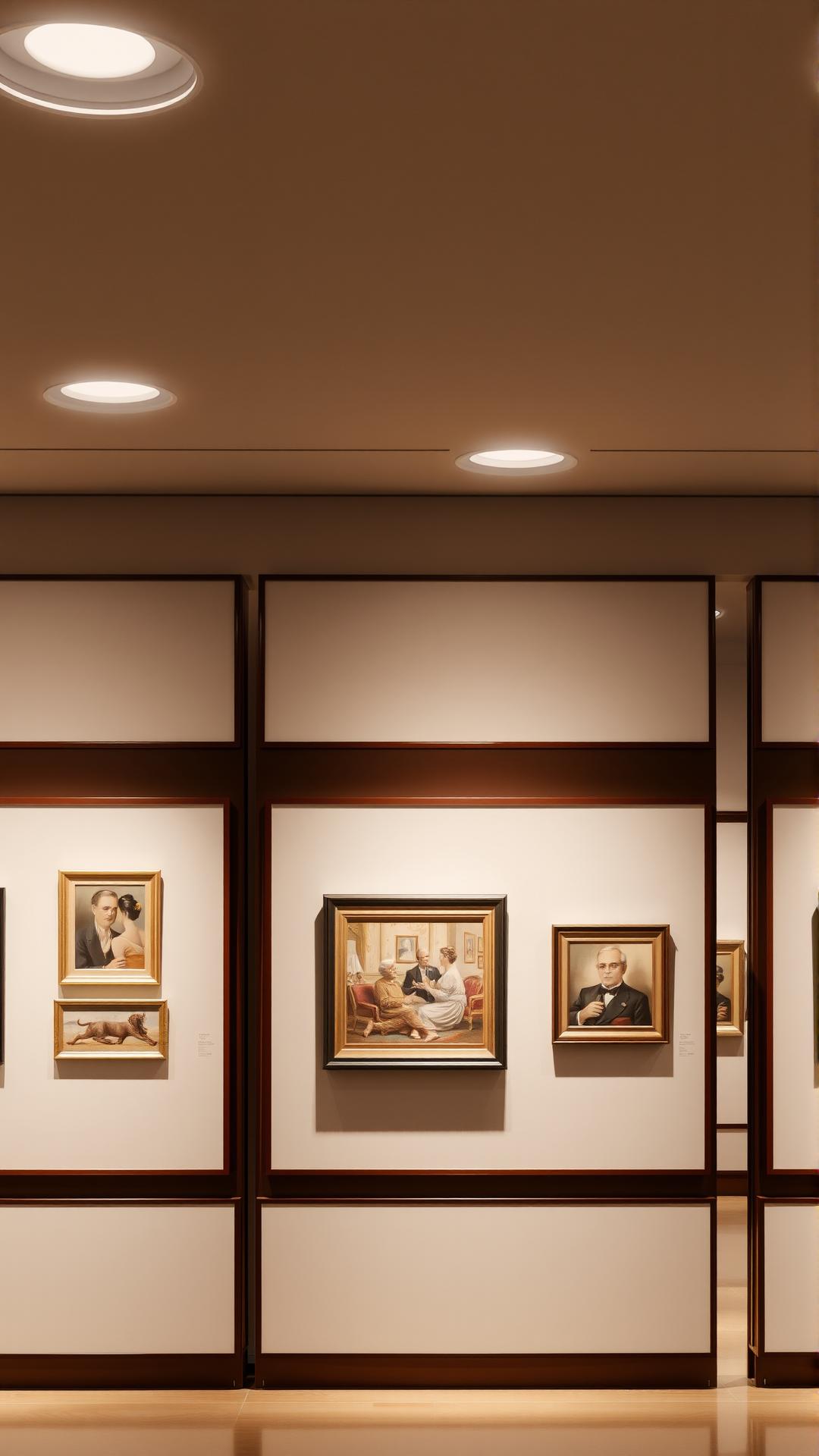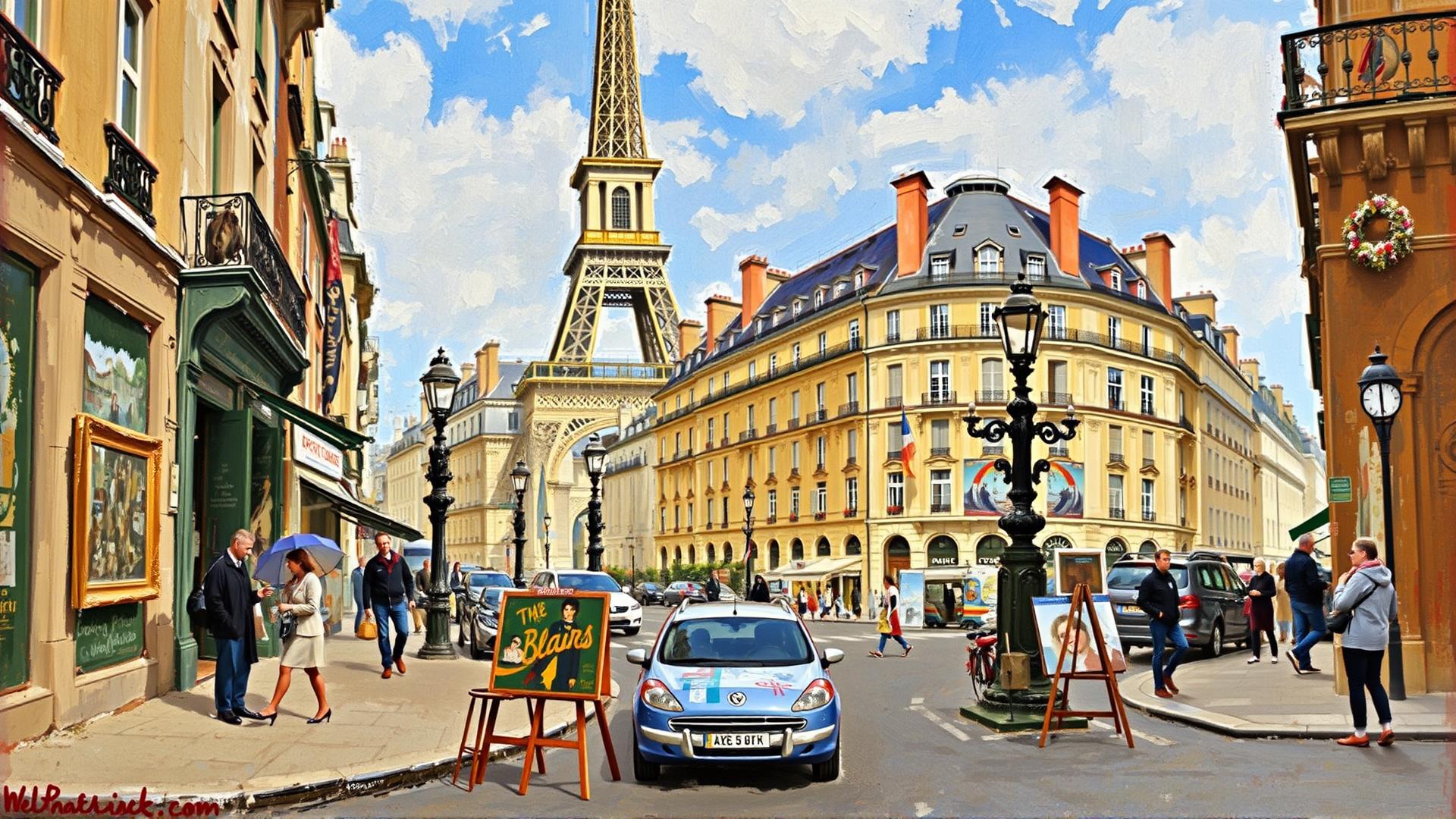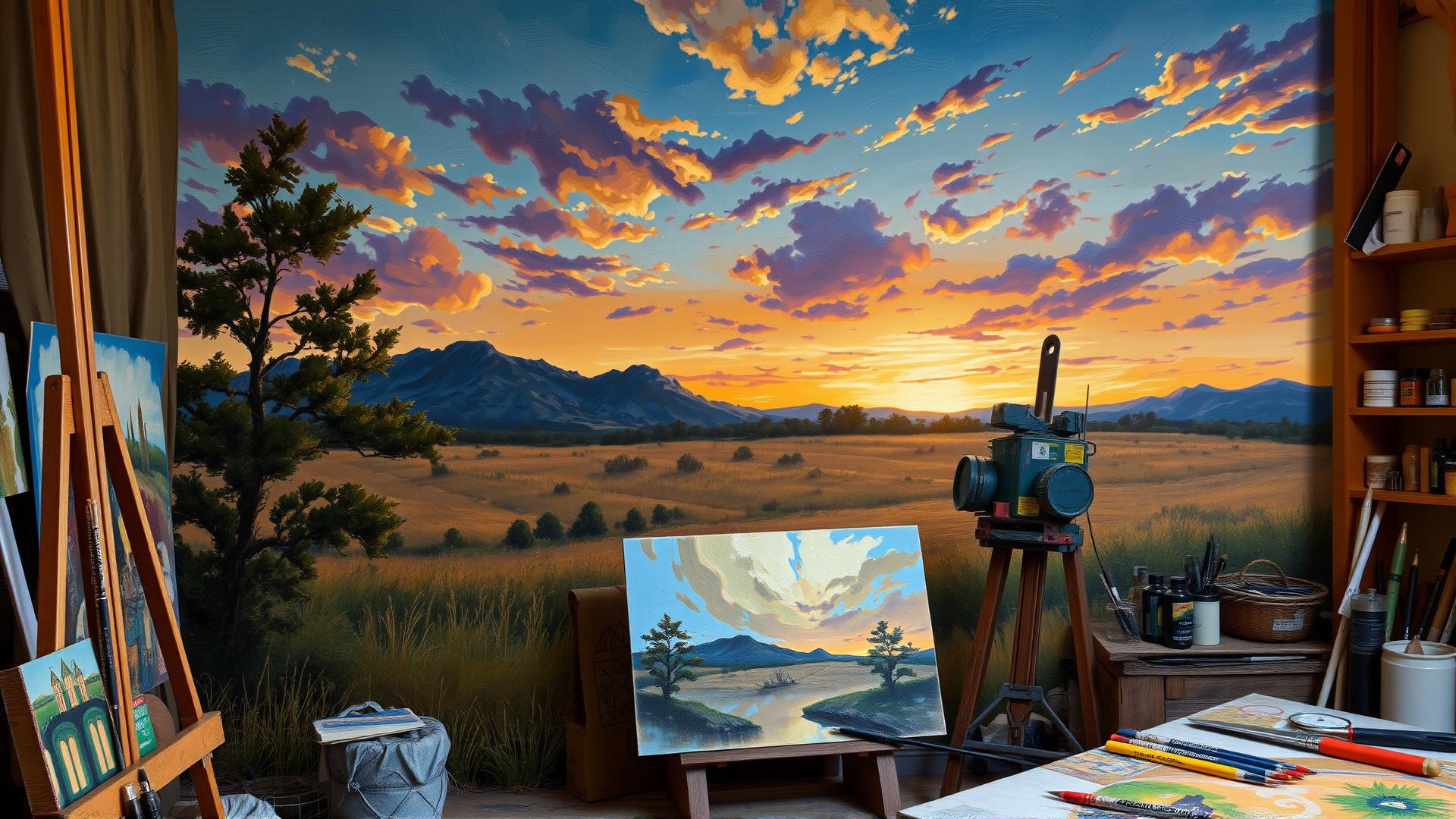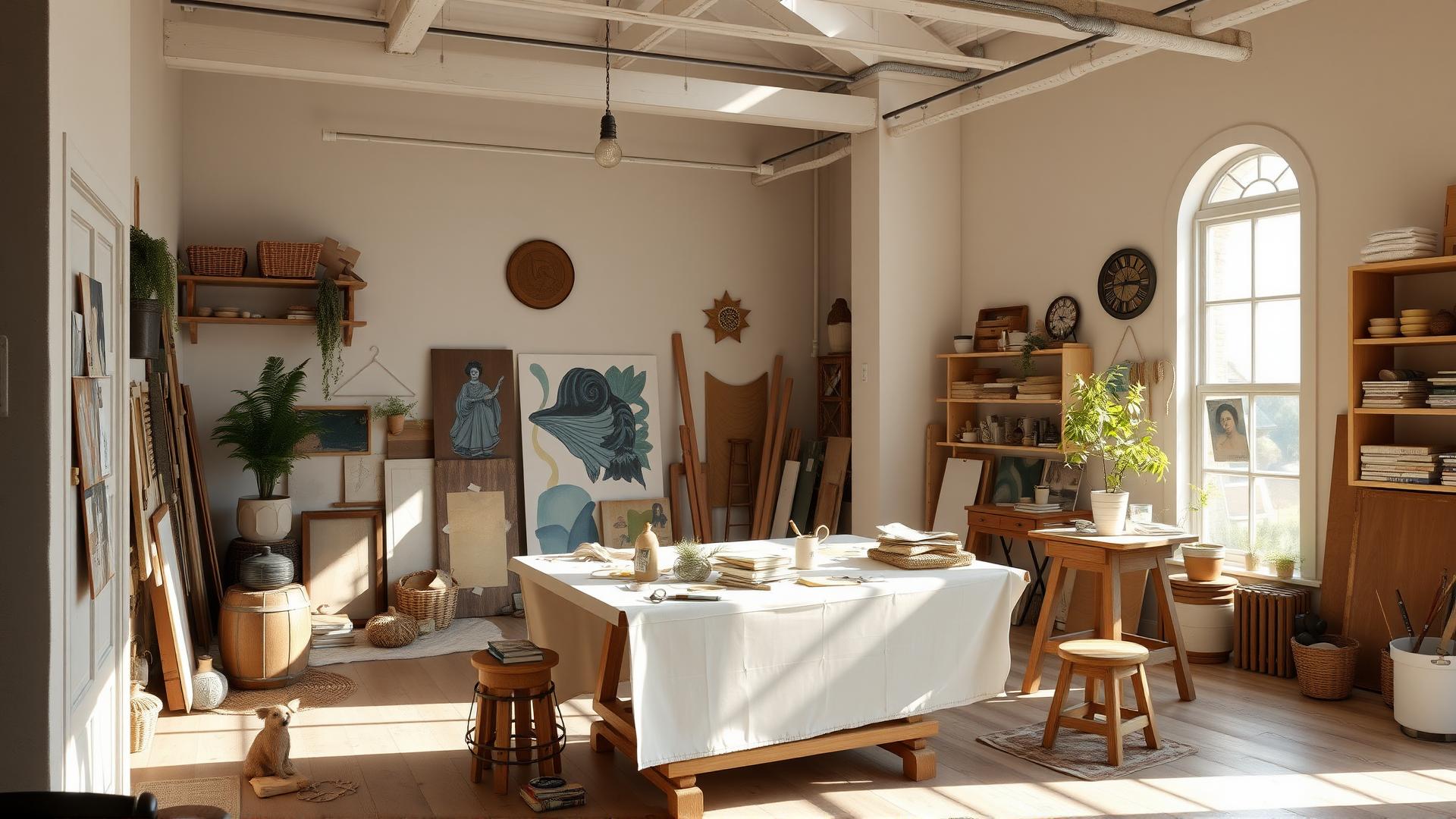
Discover Creative Projects With Cool Things To Paint
Introduction
In a world brimming with artistic potential, the idea of painting transcends mere leisure. Engaging in cool painting projects allows individuals to explore their creative side while expressing unique visions on canvas. This article dives deep into various exciting painting endeavors that cater to artists of all skill levels, from novices garnishing their first brushstrokes to experienced painters seeking fresh inspiration. By highlighting innovative techniques and themes, we aim to spark your creativity and motivate you to pick up those brushes and paint.
From abstract patterns to mural works, there are countless cool things to paint that can bring joy not just to the artist but also to the viewers. Whether you’re interested in serene landscapes, vibrant portraits, or even everyday objects reimagined through your artistic lens, the possibilities are endless. Join us as we explore these projects, providing impetus for you to embark on your own artistic journeys, ultimately enriching your understanding and enjoyment of the painting process.
Choosing Your Canvas
The Canvas Variety
The choice of canvas significantly impacts the outcome of your artwork. Different surfaces not only vary in texture and absorbency but also are compatible with distinct painting mediums. Here are some popular types of canvases to consider:
- Canvas Panels: These are made from thin pieces of cardboard or wood covered with canvas fabric. They are lightweight, affordable, and easy to transport, making them ideal for beginners. However, they can warp over time and are not as durable as stretched canvases.
- Stretched Canvas: A staple among artists, stretched canvases are made from canvas fabric stretched tightly over a wooden frame. They provide a textured surface suitable for many painting styles, particularly acrylic and oil paintings. The downside is that they can be more expensive and may require priming before use, particularly for oil paints.
- Canvas Boards: Similar to canvas panels but thicker and sturdier, canvas boards are firm and ready for use without significant preparation. They offer a middle ground in terms of convenience and durability. However, they may not provide the same texture or depth as stretched canvases, which some artists prefer.
- Wood Panels: These are often favored for acrylic and mixed media work, as they offer a smooth surface that allows for detailed brush strokes and intricate designs. Wood can warp depending on humidity and temperature, but when prepared correctly, it can be a long-lasting choice.
- Paper:** Specially designed for painting, paper offers a variety of textures and weights. Watercolor paper, for instance, is designed to handle moisture, while mixed-media paper is versatile for different techniques. The main drawback is that it’s less forgiving; mistakes may require significant effort to correct.
Evaluating Your Options
Each canvas type has its pros and cons, influencing not only the painting process but also your artistic expression. Understanding the characteristics of each surface helps tailor your projects to your intended style and techniques. For instance, if you enjoy thick brush strokes and impasto techniques, a stretched canvas might better suit your needs compared to a canvas panel. Conversely, for quick studies or practice pieces, thinner canvas boards or panels could be optimal.
Selecting the right canvas is crucial for effectively conveying your artistic vision. The variation in texture, weight, and flexibility offers you the opportunity to experiment and develop your unique style while embarking on your creative projects. Finding out which canvas works best for you may require some experimentation, but the potential for extraordinary artistic expression is worth the effort.
Exploring Color Theory
Understanding the Basics of Color Theory
Color theory is an essential aspect of painting, serving as the backbone for creating visually appealing artwork. At the core of color theory lies the color wheel, a fundamental tool that helps artists understand the relationships between colors. The color wheel comprises primary, secondary, and tertiary colors that work together harmoniously when applied to canvas.
Primary colors—red, blue, and yellow—are the building blocks of all other colors. No other colors can create them, making them the starting point for any color palette. When mixed together, these primary colors generate secondary colors—green, orange, and purple. For instance, combining blue and yellow yields green, while red and blue create purple. Finally, tertiary colors arise from mixing a primary color with a secondary color, resulting in hues like red-orange or blue-green. This relationship between the colors illustrates the dynamic play that can exist on your canvas.
The Color Wheel in Practice
The color wheel is more than just a diagram; it serves as a guide for artists to create balance and harmony in their work. By understanding the positions and relationships of colors on the wheel, artists can experiment with different color schemes. Some of the most effective schemes include:
- Complementary Colors: Colors opposite each other on the wheel, such as red and green, create striking contrasts that draw attention and add vibrancy to any piece.
- Analogous Colors: Colors that sit next to each other, like blue, blue-green, and green, evoke unity and tranquility, making them ideal for more soothing compositions.
- Triadic Colors: Three colors evenly spaced around the wheel, such as red, yellow, and blue, offer a balanced and lively palette.
Understanding these concepts can significantly enhance your painting skills by allowing you to make conscious choices in your artwork. By experimenting with various color combinations, you begin to develop a unique style that reflects your artistic voice.
Incorporating these principles as you embark on your cool painting projects will not only turn your canvas into a vibrant expression of your imagination but also elevate your overall painting technique, allowing for more enriching artistic experiences.
Abstract Art for Beginners
Experimentation with Shapes and Colors
Abstract painting is a captivating way to express emotions and ideas without the limitations of representational art. It invites beginners to embrace their imagination and step boldly into the vibrant world of color and form. One of the most exciting aspects of abstract art is the freedom it provides, allowing artists to focus on personal interpretations and emotional responses rather than precise depictions. As you begin your journey, consider how color theory, introduced in the previous chapter, can enhance your abstract creations.
To start, gather your supplies—canvas or watercolor paper, acrylic or oil paints, brushes in various sizes, and palette knives. One of the foundational techniques in abstract painting is layering. Begin by applying a base color that resonates with your mood. This might be a calming blue, a vibrant red, or anything in between. Layering colors can create depth and complexity, making your painting feel more dynamic. Don’t be afraid to utilize the color wheel; experiment with complementary and analogous color schemes to see how different hues interact on the canvas.
When it comes to shapes, let go of expectations. Use brushes to create sweeping strokes, dashes, or even squiggles. Palette knives can add texture through scraping and layering. Don’t limit yourself to specific shapes; circles, triangles, and organic forms can all coexist beautifully. This is where experimentation truly shines! Try using tools like sponges, fingers, or even everyday objects to leave unique imprints. Each mark tells a story and contributes to the overall composition.
As you explore different techniques, think about how the arrangement of shapes and colors influences the viewer’s emotions. For instance, sharp, jagged shapes may evoke feelings of tension, while soft, rounded forms might suggest tranquility. Keep a journal of your thoughts and feelings as you paint; this can help you evolve your personal style over time.
Abstract art is not about perfection but rather about self-discovery. Allow your artistic instincts to guide you as you create. Embrace mistakes as learning opportunities, for they often lead to unexpected beauty in your work. By letting go of control and being open to spontaneous creativity, you lay the groundwork for a fulfilling artistic journey.
Creating NatureInspired Landscapes
Capturing the Essence of the Outdoors
Painting landscapes is a captivating way to connect with nature and express its beauty on canvas. Whether you are drawn to lush green meadows, majestic mountains, or tranquil lakes, each outdoor scene offers a unique palette of colors and moods. To effectively capture these landscapes, the right techniques and tools are vital. Start by selecting a suitable medium; acrylics and watercolors are great for beginners due to their versatility and forgiving nature.
Blocking in your composition is a crucial first step. Use broader strokes to outline the general shapes of the land, sky, and water. For acrylics, you can layer colors, whereas watercolors require a more strategic approach to keep the light areas crisp. A limited color palette, often consisting of greens, blues, and earthy browns, will help you focus on creating harmony and avoid overwhelming your piece with too many hues.
Tools and Methods for Outdoor Scenes
When painting landscapes, certain tools can enhance your creative process. A good set of brushes, including flat, round, and detail brushes, will allow you to create various textures. Palette knives can be utilized for both applying and scraping off paint, introducing a dynamic feel to your work. Don’t shy away from sponges, which can create beautiful cloud effects in the sky.
Consider the time of day during your painting sessions, as lighting dramatically influences colors and shadows. Early morning or late evening offers a softer light, ideal for capturing the warming tones of dawn or dusk. Use a sketchbook during outdoor excursions to jot down ideas, taking notes on colors and light as the scenery changes. This practice not only enhances your observational skills but also serves as an invaluable reference when you return to your studio.
Enhancing your landscapes with details such as trees, clouds, and reflections in water can bring your scenes to life. Focus on layering and glazing techniques for depth. Remember, the beauty of landscape painting is not just about replicating nature but interpreting it through your perspective. Let your imagination run wild while remaining true to the elements seen in the world around you. This balance will result in artwork that speaks volumes about your unique vision and creativity.
Whimsical Character Design
The Art of Imbuing Personality into Characters
Creating charming characters in your artwork can be one of the most fulfilling aspects of painting. With a touch of creativity, you can breathe life into illustrative figures, making them resonate with distinct personalities. Start by thinking about the character’s backstory; what drives them? What obstacles have they overcome? These questions will help you to visually articulate their essence. For instance, a playful character may have exaggerated features like larger-than-life eyes and a wide smile, which can convey joy and curiosity.
To design your character, sketch out several iterations. Experiment with different shapes and proportions, since these elements can significantly influence how a viewer might perceive the character’s personality. Rounded shapes often evoke friendliness, while sharp angles can suggest danger or aggression. Additionally, consider the clothing and accessories you wish to incorporate. A quirky hat or mismatched socks can serve as subtle hints to your character’s playful nature or adventurous spirit.
Using color theory can also add depth and personality to your characters. Warm colors like reds and yellows tend to evoke excitement, while cool colors like blues and greens can communicate calmness or sadness. Selecting a palette that reflects the character’s emotions enhances their overall appeal. For beginners, watercolor or digital art can be forgiving mediums that allow for easy adjustments in color and form, encouraging experimentation.
Incorporate storytelling elements into your character design as well. Perhaps your character carries a quirky object that symbolizes their journey, like a compass for an adventurous spirit or a paintbrush for an aspiring artist. Adding layers of meaning through elements in the character’s design encourages viewers to connect on a deeper level.
Don’t shy away from feedback. Engaging with fellow artists can provide new perspectives that ignite fresh ideas for your characters. Sharing sketches within art communities can spark conversations that lead to important improvements and refinements. Whether working on individual pieces or collaborating on projects, the community can be a wonderful resource for inspiration and motivation.
By embracing these techniques, you can create whimsical characters that not only captivate but also resonate deeply with viewers, enriching your artistic expression. Let your imagination roam free, and see where creativity takes your character designs!
Mural Painting for Impact
Understanding the Mural Context
Mural painting has the power to transform spaces, making it a compelling choice for creatives looking to leave a lasting impact. Before embarking on a mural project, it is essential to consider the context of the location. Think about the community the mural will serve, the space’s architectural features, and the themes that resonate with its inhabitants. An effective mural intertwines artistry with storytelling, often reflecting local culture, history, and identity.
Planning Your Mural Project
Planning a mural begins with an intriguing idea, but it quickly evolves into a detailed blueprint. First, outline your goals: Are you aiming to beautify a public building, tell a community story, or address a social issue? Once you have a clear vision, sketch out your design, keeping in mind proportions, colors, and the surrounding environment. It’s wise to create multiple drafts to refine your concepts and play with different styles, ensuring the mural will resonate with onlookers.
Permissions are a critical part of planning. Research local regulations and gain necessary approvals from property owners and municipal authorities. Meeting with community stakeholders can provide valuable insights and foster support for your project. Some municipalities have programs that celebrate and fund mural art, which can also be beneficial in gaining necessary permissions and funding.
Techniques and Execution
When it comes to the actual painting, various techniques can be employed to enhance your mural’s final appearance. Whether you choose to use spray paints, acrylics, or even traditional fresco techniques, each medium has its own characteristics that can yield unique results. Use grids and projection methods to ensure accuracy in your design when scaling up. This precision helps maintain the integrity of your concept as you work on large surfaces.
Consider incorporating mixed media elements like stencils or digital projections to elevate the mural’s intricacy. As you paint, remain mindful of the composition’s flow and how it interacts with the surrounding architecture. Engage with your audience: hosting workshops or community paint days not only enriches the mural but also fosters a sense of ownership within the community.
Mural painting is not just about aesthetics—it’s about creating dialogue and connection through artistry. A well-planned and executed mural can impact viewers and communities, leaving them inspired and uplifted. As you step into the world of mural painting, remember that each stroke contributes to a larger narrative, turning blank walls into canvases of expression.
Displaying Your Art Creative
Maximizing Impact Through Strategic Display
When it comes to showcasing your completed paintings, the way you display your art can significantly enhance its impact and reception. Whether you are considering gallery exhibitions or utilizing online platforms, effective display strategies will engage and captivate your audience.
Gallery exhibitions provide a traditional yet powerful method for sharing your work. Selecting the right venue is crucial; look for spaces that align with your artistic style and target audience. Once you have secured an exhibition space, consider how the layout and lighting will affect the viewer’s experience. Grouping works thematically or in a way that tells a story can encourage deeper engagement. Remember to prepare proper labels that include titles, medium, and an artist statement to provide context for your audience. This additional information invites viewers to connect with your art on a personal level.
On the other hand, online platforms have become indispensable tools for emerging artists. Social media channels like Instagram and Facebook allow you to showcase your paintings to a global audience. High-quality images are vital, so invest in good lighting and photography techniques to highlight details and colors in your work. Using hashtags relevant to your art style or themes will help your pieces reach the right audience. Sharing behind-the-scenes content or your creative process can also attract followers and create a community around your art.
For a more interactive approach, consider platforms like Saatchi Art and Etsy, which not only allow you to display your artwork but also provide an opportunity for sales. Create an online portfolio that seamlessly showcases your pieces, ensuring that your layout is visually appealing and easy to navigate. Engaging with your audience through comments and messages can foster relationships that lead to increased interest in your work.
Not forgetting the value of art shows and open studios, collaborating with local artists can amplify exposure. Joint exhibitions allow for shared resources and a broader audience base, offering a richer experience for art enthusiasts. This strategy can also pave the way for community recognition and support, offering opportunities for future projects.
The key to effectively displaying your art is to embrace both traditional and modern methods. By doing so, you not only showcase your completed paintings but also invite others to share in your artistic journey.
Conclusions
Painting is more than just an activity; it’s a pathway to self-discovery and an avenue for connecting with others. As we’ve explored the various cool things to paint, we hope to have inspired you to consider the different ways in which you can express yourself artistically. Each project mentioned serves not only as a way to hone your skills but also as a practical means of infusing beauty into your surroundings, rewarding your efforts with a completed masterpiece.
These creative endeavors reflect your individuality and can significantly enhance your emotional well-being. Whether you paint for yourself or to share with others, the important takeaway is to keep creating and letting your imagination flourish. Embrace the journey of painting and allow it to be a source of joy, inspiration, and personal growth.


